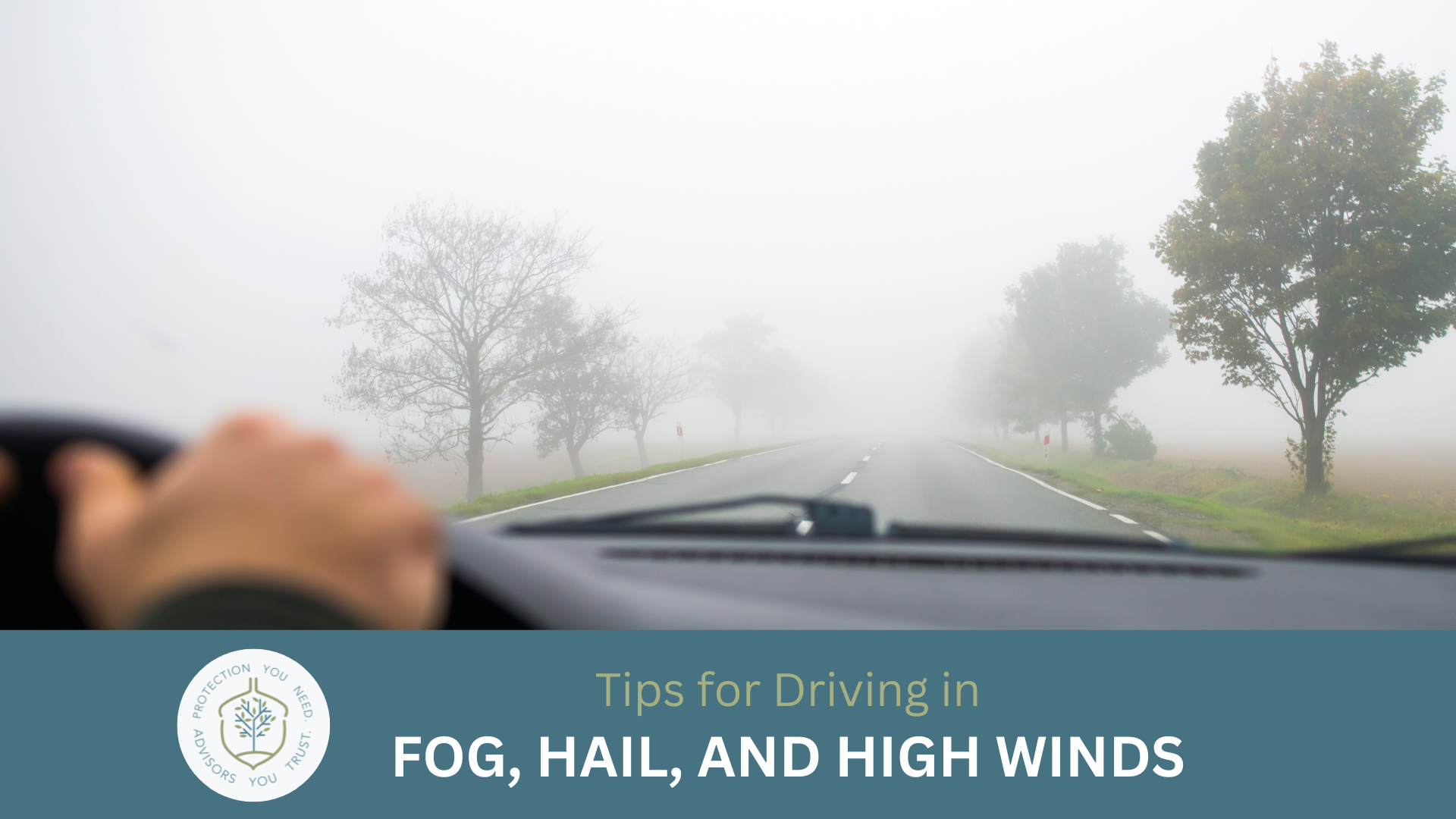Driving in bad weather can be frightening. We are used to automobiles handling in a specific way, poor weather can change these characteristics and usually not for the better.
Driving instruction classes often cover the necessary precautions for driving in rain, but most skip over more unique, but equally dangerous, conditions like fog, hail, and high winds.
In general, it’s best to stay off the road in adverse conditions, but that isn’t always possible.
Louisiana, no stranger to inclement weather, experiences a wide range of challenging driving conditions throughout the year.
That’s why our team at TSL Insurance Group wants to share some knowledge on best practices for operating a car in inclement weather to keep you safe and on the road!
General Tips for Driving in Severe Weather
There are some driving safety tips that apply to all severe weather conditions. Most of these are just best safety practices for driving in any condition, but inclement weather amplifies the importance of these good habits.
Slow Down
When the weather gets bad or visibility is reduced, your speed should reduce as well. Lower speeds give you more time to react in dangerous situations.
Maintain a Proper Driving Position
You should also maintain a safe driving position that is not too low that you lose visibility, nor too high that your perspective is warped or your range of vision is limited.
Stay Focused and Alert
Finally, the best advice of all that applies in every instance of driving: stay alert. Staying aware of your surroundings on the road is paramount in any conditions.
Avoid using a phone, eating, applying makeup, or any activity that requires you to take your attention off the road.
Tips for Specific Weather Conditions
In general, if the weather conditions look unsafe to be outside in, they are unsafe to drive in. But sometimes it is necessary to drive in adverse weather.
Below are three common bad-weather driving conditions and a few ways to improve the safety of any journeys made in these weather patterns.
Fog
When driving in fog, visibility is greatly reduced, often even more so than it would be at night. In these situations, there are some key steps to take to keep your drive as safe as possible.
Use Fog Lights
If your car is equipped with fog lights or running lights, use them along with your headlights. Fog lights are typically mounted lower on the car and are better at illuminating the road to reveal hazards or markings.
Clear Your Windows
Use wipers and defrosters to keep your windows clear to allow you to see as much as you’re able. This is especially important in colder fog.
Pay Attention to Your Route
Make use of GPS or carefully read road markings and signs, even if you’re traveling somewhere you go often. Aside from the fact that changing conditions can restrict or even close roads, being aware of your route can help you map out distances you otherwise may not be aware of.
Hail
We strongly recommend that if you are driving when a hailstorm starts, you should find covered shelter in your vehicle as soon as possible. It is never advisable to drive in a hailstorm.
Use Hazard Lights
If you must drive in hail, or if you are driving to find shelter, you should use your hazard lights to attract attention to your vehicle.
Hailstorms reduce visibility greatly, and can sometimes even crack car windshields, meaning other drivers on the road may not be able to make out the shape of your car without flashing lights.
Stay in Your Vehicle and Check for Hail Damage
Once you’ve reached shelter, stay in your vehicle. Once the hail has passed, before you drive your vehicle again, check for damage along the body of the car, deflated tires, and ensure there are no leaks. Hail can cause severe damage to motor vehicles.
High Winds
Maintain Control
When driving in high winds, you may notice your car being shifted in the direction the wind is pushing. It is very important to maintain strong control over your car.
In these conditions, as well as slowing down, you should always keep two hands firmly on the wheel at 9 and 3 o’clock.
Watch for Flying Debris
It’s also important to watch for flying debris from yards, roadsides, or even other vehicles that may be picked up by the wind.
Give Tall Vehicles Extra Space
If you are driving on a highway around tall vehicles like box trucks, big rigs, or tractors, give these vehicles a wide berth.
High winds affect tall vehicles more strongly than lower slung vehicles. Avoid driving alongside any vehicles in high wind conditions if you can.
By following these safety tips, you can help minimize the risks associated with driving in fog, hail, high winds, or other severe weather conditions. Careful operation of your vehicle ensures a safer journey for yourself and other road users.
Remember, safety should always be your top priority when navigating any weather condition. Stay informed, stay cautious, and stay safe on the roads.
Read Also: Driving in Heavy Rain: Do’s and Dont’s
And when you’re looking for coverage for your vehicle, home, or anything else, consider TSL Insurance Group.
Our insurance experts are uniquely trained to get you the best policy possible at the best price possible. That approach and our talented team make us the best insurance agency in Baton Rouge and the entire Acadiana area.
We have five offices in Baton Rouge, Lafayette, Franklin, Abbeville, and Lutcher, ready to serve you!


Recent Comments